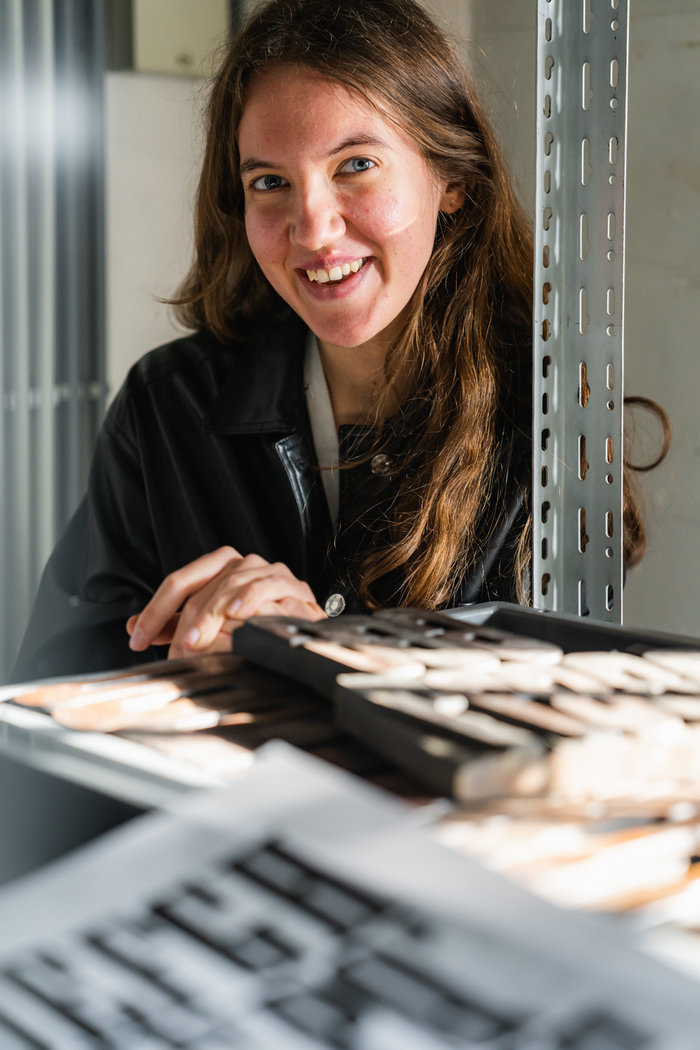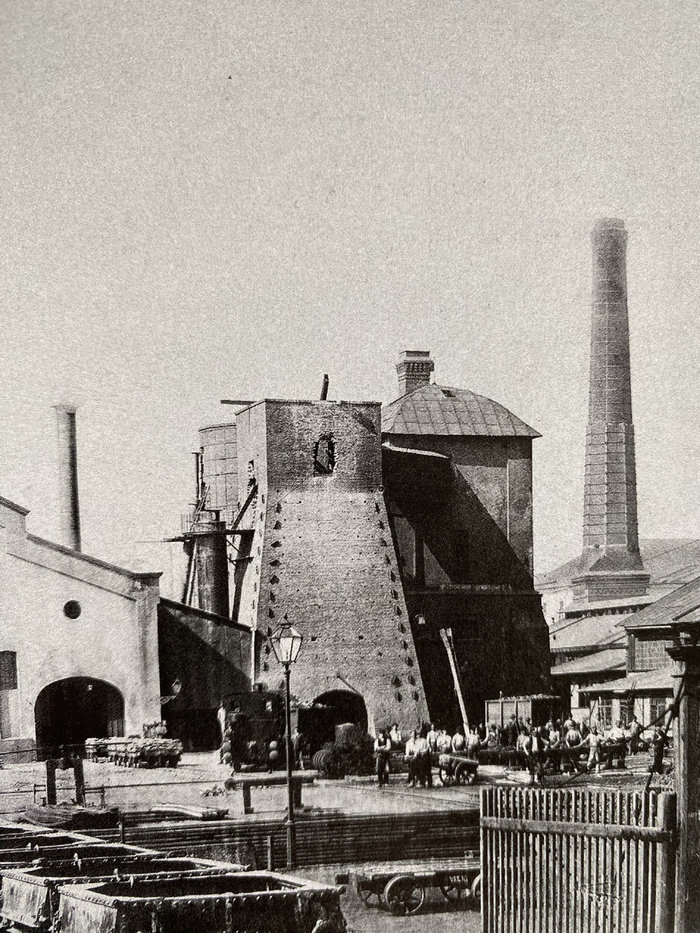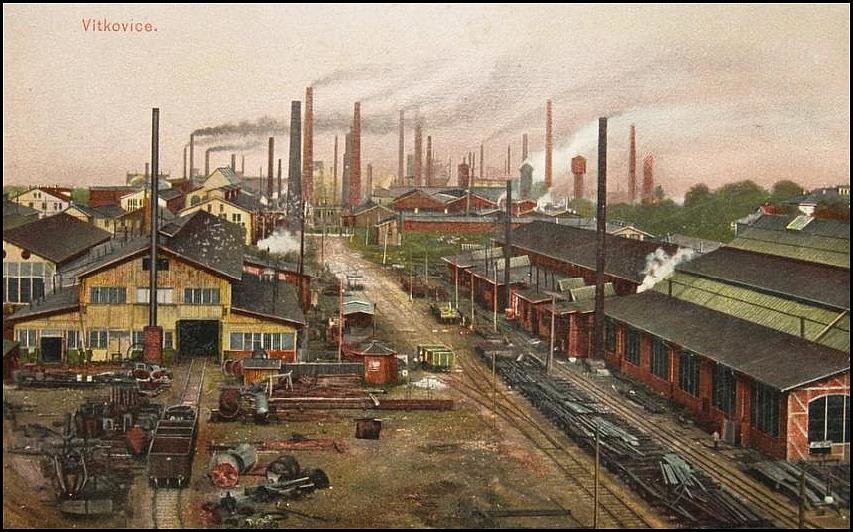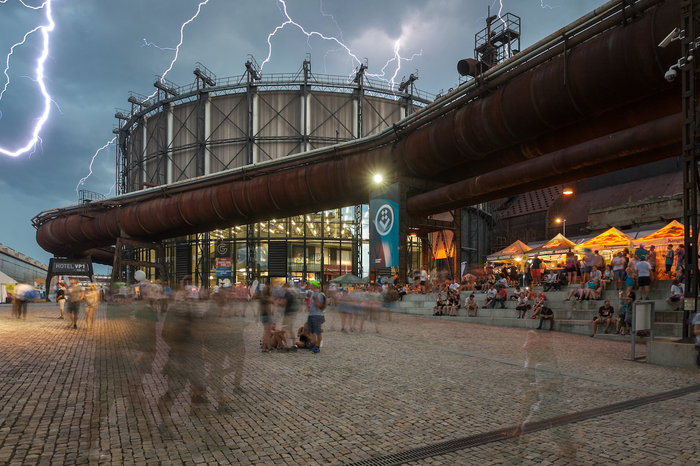Klará Ciesarová has been doing an internship at the Museum of Industry. In the Czech Republic, she studies at the University of Ostrava, the country's third-largest city. She is studying Monument Care & Industrial Heritage Publicity there and was looking for an internship in the international museum sector. Although she enjoyed immersing herself in Ghent's history during the past months, she would like to tell us a bit about Ostrava's history in turn, because Ostrava also has a rich industrial past.


Photo on the left: Klará at work in the museum © Martin Corlazzoli
Photo on the right: the Belgium-type blast furnaces – Vitkovice ironworks
(source: Vítkovice Industria Ostrava: Vítkovice blast furnaces 1836-2007 / Miloš & Radim Polášek, Jana Machotková / 2007)
It is hard to find a place in the Czech Republic where the Industrial Revolution had a greater impact than in Ostrava. A typical industrial town with an unmistakable atmosphere of pit towers, blast furnaces and factory halls – a beautiful panorama! Ostrava was first mentioned in the 13th century, when it was a small town on the Ostravice River, after which it is named. However, this all changed in the early 19th century when an iron ore deposit was found in the area – the black gold! Gradually, the first underground mines began to emerge here. Today, Ostrava is known as the Steel City or the Steel Heart of the Czech Republic, mainly thanks to the Vítkovice Ironworks, which was founded in 1828 in a part of Ostrava called Vítkovice. This created a unique complex of heavy industrial production, from coal mining to a processing plant and coke production to pig iron production.
Vítkovice Ironworks has been famous in Europe since its beginning for its quality production of railway rails. Did you know that to this day, the whole of Central Europe still uses railway lines made from Ostrava iron? But what brought them to the top also nearly brought them to the bottom. By the 1870s, most of the important lines had been completed, orders were dwindling and the ironworks management was weak – everything was heading for bankruptcy. Fortunately, there was a saviour, a hero: a young Viennese manager called Paul Kupelwieser with a lot of experience from England, Germany and ... Belgium! He brought modern steel production to Ostrava – in time new blast furnaces of the so-called Belgian type were built, and a new glorious era began for Vítkovice Ironworks.

Photo: view of the ironworks, 1908
(source: https://www.patriotmagazin.cz/unikatni-historicke-fotografie-ukazuji-jak-se-menily-vitkovicke-zelezarny)
As the new manager, Paul Kupelwieser turned Vítkovice into one of the largest steelworks in Europe. Under his leadership, production was reoriented towards arms orders. The armour plates produced in the Vítkovice Ironworks had success in comparative shooting tests and the plant became the exclusive supplier of armour plates for the Austro-Hungarian fleet. Paul Kupelwieser also had a strong sense of social responsibility and created a unique architectural and social programme in Vítkovice. He was interested in the needs of the workers, building apartments, schools, a hospital and providing culture for them.
Another boom period came during the communist regime. It was during this time that Ostrava became known as the Steel City. Mining survived in the region until the early 1990s. In 1993, mining in the Ostrava district ceased and in 1998 the Vítkovice Ironworks closed. The buildings and machines that had served for almost a century became a national cultural monument and were gradually opened up to the public, and today you can visit them too! The former gasworks became a concert hall, the factory halls became a multimedia learning centre, and the bathrooms, changing rooms and other operational buildings became theatres, cafés, cinemas and galleries.
So yes, Prague is beautiful, but what about a trip to Ostrava?

Photo on the left: the cultural centre - Lower Vitkovice area
Photo on the right: the former gasworks converted to a concert hall
